Blogs by Marina Rustow
Islamic Law Blog, 2023
Notaries are the ones who wrote documents, and many of the documents they wrote never came before... more Notaries are the ones who wrote documents, and many of the documents they wrote never came before a qāḍī in court, though qāḍīs did archive some of them.
Islamic Law Blog, 2023
Thinking of studying medieval Arabic legal deeds? Here's how to begin and why it's worthwhile.
Islamic Law Blog, 2021
What medieval documents can tell us about Islamic law
Fragment of the Month, Taylor-Schechter Genizah Research Unit, Cambridge University Library,, 2021
Abraham Maimonides, the son of Moses Maimonides, handled two legal cases about Jewish traders in ... more Abraham Maimonides, the son of Moses Maimonides, handled two legal cases about Jewish traders in Southeast Asia. One of them, T-S Ar.30.42, a court testimony from 1226, is about the death of a trader in a place called Kalah, which is described as "in the lands of ...." Here I propose a reading of the partially effaced word: Java, which in medieval Arabic texts refers not to the island of Java, but to Southeast Asia in general. Its appearance in a thirteenth-century geniza fragment is even more significant for Indian Ocean historians than for geniza specialists.
Fragment of the Month, Taylor-Schechter Genizah Research Unit, Cambridge University Library, 2011
Reconstructing a book from fragments preserved in the Genizah is like trying to complete a puzzle... more Reconstructing a book from fragments preserved in the Genizah is like trying to complete a puzzle where most of the pieces are missing. Recently, Roni Shweka pieced together six fragments of an eleventh-century rotulus of the She'iltot located in four different Genizah collections. The resulting manuscript proved of great interest in several different ways. A rotulus is a vertical scroll with the text written parallel to the short side. Judith Olszowy-Schlanger, who is currently studying rotuli from the Genizah, calls it 'the third form of the Hebrew book', after the megilla (the horizontal scroll, in which the text runs parallel to the long side) and the codex (the bound book as we know it).
Interviews by Marina Rustow
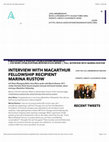
AJS Perspectives, 2015
Below is the full interview. Read an abbreviated version of the interview here (/publications-res... more Below is the full interview. Read an abbreviated version of the interview here (/publications-research/ajs-news/interview-with-marina-rustow). Amy Weiss: Congratulations on winning a MacArthur Fellowship! How did you find out you had just won a Genius Award? Marina Rustow: I was out running errands with my four-year old. I actually was expecting a call from Chicago, but not from the MacArthur Foundation. A furniture company was supposed to call me about couch swatches. I kept getting these missed calls from Chicago and wondering why the furniture company wasn't leaving a message. When I got home I finally picked up the call and heard the voice on the other end of the line ask, "Is this Marina Rustow? Are you in a place where you can have a confidential conversation?" I thought: this can't be good. There must be some bill that never made it to my home and has now gone into collections. Or someone died. Luckily it didn't turn out to be either. It's surreal.
Zmanim, 2021
On a visit to the University of Haifa, I did an interview with a pair of dear friends. I have no ... more On a visit to the University of Haifa, I did an interview with a pair of dear friends. I have no memory of what I said, but it all sounds like stuff I would say. Only in Hebrew.
Books by Marina Rustow
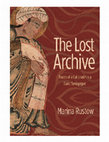
Publisher's description:
The lost archive of the Fatimid caliphate (909–1171) survived in an ... more Publisher's description:
The lost archive of the Fatimid caliphate (909–1171) survived in an unexpected place: the storage room, or geniza, of a synagogue in Cairo, recycled as scrap paper and deposited there by medieval Jews. Marina Rustow tells the story of this extraordinary find, inviting us to reconsider the longstanding but mistaken consensus that before 1500 the dynasties of the Islamic Middle East produced few documents, and preserved even fewer.
Beginning with government documents before the Fatimids and paper’s westward spread across Asia, Rustow reveals a millennial tradition of state record keeping whose very continuities suggest the strength of Middle Eastern institutions, not their weakness. Tracing the complex routes by which Arabic documents made their way from Fatimid palace officials to Jewish scribes, the book provides a rare window onto a robust culture of documentation and archiving not only comparable to that of medieval Europe, but, in many cases, surpassing it. Above all, Rustow argues that the problem of archives in the medieval Middle East lies not with the region’s administrative culture, but with our failure to understand preindustrial documentary ecology.
Illustrated with stunning examples from the Cairo Geniza, this compelling book advances our understanding of documents as physical artifacts, showing how the records of the Fatimid caliphate, once recovered, deciphered, and studied, can help change our thinking about the medieval Islamicate world and about premodern polities more broadly.
Title page, table of contents, acknowledgments and foreword.
Heresy and the Politics of Community: the Jews of the Fatimid Caliphate (2008)
Scripture and schism: Samaritan and Karaite treasures from the Library of the Jewish Theological Seminary, 2000
Corrections to the catalogue of the 1999 exhibition I curated together with Elka Deitsch and Shar... more Corrections to the catalogue of the 1999 exhibition I curated together with Elka Deitsch and Sharon Lieberman-Mintz.
Scripture and Schism: Samaritan and Karaite Treasures From the Library of the Jewish Theological Seminary: An Exhibition December 14, 2000-April 5, …
Papers by Marina Rustow

Journal of Islamic Law
Marina Rustow notes how prevalent scholarly attention is to long-form texts of Islamic law—attent... more Marina Rustow notes how prevalent scholarly attention is to long-form texts of Islamic law—attention that she argues, comes at the expense of studying Islamic legal documents in a sufficient manner. Study of the documents is an indispensable enterprise if we are to fully understand “how law worked in practice.” In view of what we know to have been “heaps” of documents produced by Muslim judges and notaries, Rustow underscores how particularly noticeable a disjuncture there is between those documents and the long-form texts. Moreover, scholars often skip over and thus fail to avail themselves of the utility of documents in adding texture to social and legal history. She cautions social historians against “pseudo-knowledge,” that is, the temptation to overlook complex factors, usually embedded in legal documents, that render our otherwise tame scholarly perception of the past truer but more “unruly.” In the end, her invitation to join her in the study of documents and thereby improve ...
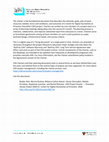
Project charter for CDH Research Partnership - Geniza 2020-2021. The charter is the foundational ... more Project charter for CDH Research Partnership - Geniza 2020-2021. The charter is the foundational document that describes the rationale, goals, plan of work, resources needed, terms and conditions, and outcomes of a Center for Digital Humanities at Princeton (hereafter CDH) project. Charters are written by core members of a project team in a series of planning meetings taking place over the course of a month. The planning process is intensive, collaborative, and requires substantial input from everyone on a team. Charters serve as formalized agreements among all team members on such crucial questions as scope, technical design, infrastructural needs, and success criteria. <br> This is a digital copy of a "living document" at a single point in time. Charters are amended as necessary throughout the project lifecycle to document major changes and note when the "Built by CDH" Software Warranty and "Built by CDH" Long Term Service Agreement take effect,...

Reconstructing a book from fragments preserved in the Genizah is like trying to complete a puzzle... more Reconstructing a book from fragments preserved in the Genizah is like trying to complete a puzzle where most of the pieces are missing. Recently, Roni Shweka pieced together six fragments of an eleventh-century rotulus of the She'iltot located in four different Genizah collections. The resulting manuscript proved of great interest in several different ways. A rotulus is a vertical scroll with the text written parallel to the short side. Judith Olszowy-Schlanger, who is currently studying rotuli from the Genizah, calls it 'the third form of the Hebrew book', after the megilla (the horizontal scroll, in which the text runs parallel to the long side) and the codex (the bound book as we know it). The rotulus used to be thought of as an early and transitional book-form between the megilla (the medium preferred by Jews in antiquity) and the codex (which Jews adopted following the Islamic conquests; Christians had started using it several centuries earlier). Together with Gideon Bohak, Olszowy-Schlanger has found about three-hundred fragments of rotuli in the Genizah, many of them dating to as late as the eleventh century. The form was especially popular for copying texts for personal use, such as study copies of the Talmud or of responsa, or for liturgical poetry and hafṭarot. Because the works were userproduced and informal, they were usually written on less expensive material, often on the backs of other, disused texts. A section from a typical Genizah rotulus, containing responsa (T-S G2.20
At the Limits of Communal Autonomy: Jewish Bids for Intervention from the Mamluk State (MSR XIII.2, 2009)
Fatimid State Documents, Serial Recyclers and the Cairo Geniza






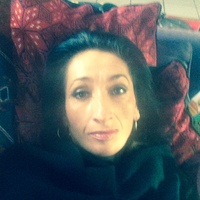
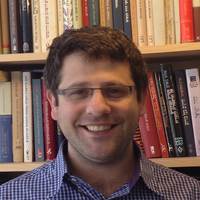

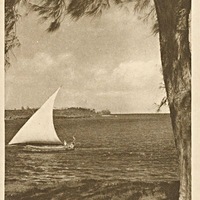

Uploads
Blogs by Marina Rustow
Interviews by Marina Rustow
Books by Marina Rustow
The lost archive of the Fatimid caliphate (909–1171) survived in an unexpected place: the storage room, or geniza, of a synagogue in Cairo, recycled as scrap paper and deposited there by medieval Jews. Marina Rustow tells the story of this extraordinary find, inviting us to reconsider the longstanding but mistaken consensus that before 1500 the dynasties of the Islamic Middle East produced few documents, and preserved even fewer.
Beginning with government documents before the Fatimids and paper’s westward spread across Asia, Rustow reveals a millennial tradition of state record keeping whose very continuities suggest the strength of Middle Eastern institutions, not their weakness. Tracing the complex routes by which Arabic documents made their way from Fatimid palace officials to Jewish scribes, the book provides a rare window onto a robust culture of documentation and archiving not only comparable to that of medieval Europe, but, in many cases, surpassing it. Above all, Rustow argues that the problem of archives in the medieval Middle East lies not with the region’s administrative culture, but with our failure to understand preindustrial documentary ecology.
Illustrated with stunning examples from the Cairo Geniza, this compelling book advances our understanding of documents as physical artifacts, showing how the records of the Fatimid caliphate, once recovered, deciphered, and studied, can help change our thinking about the medieval Islamicate world and about premodern polities more broadly.
Papers by Marina Rustow
The lost archive of the Fatimid caliphate (909–1171) survived in an unexpected place: the storage room, or geniza, of a synagogue in Cairo, recycled as scrap paper and deposited there by medieval Jews. Marina Rustow tells the story of this extraordinary find, inviting us to reconsider the longstanding but mistaken consensus that before 1500 the dynasties of the Islamic Middle East produced few documents, and preserved even fewer.
Beginning with government documents before the Fatimids and paper’s westward spread across Asia, Rustow reveals a millennial tradition of state record keeping whose very continuities suggest the strength of Middle Eastern institutions, not their weakness. Tracing the complex routes by which Arabic documents made their way from Fatimid palace officials to Jewish scribes, the book provides a rare window onto a robust culture of documentation and archiving not only comparable to that of medieval Europe, but, in many cases, surpassing it. Above all, Rustow argues that the problem of archives in the medieval Middle East lies not with the region’s administrative culture, but with our failure to understand preindustrial documentary ecology.
Illustrated with stunning examples from the Cairo Geniza, this compelling book advances our understanding of documents as physical artifacts, showing how the records of the Fatimid caliphate, once recovered, deciphered, and studied, can help change our thinking about the medieval Islamicate world and about premodern polities more broadly.